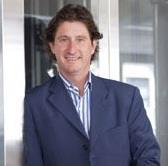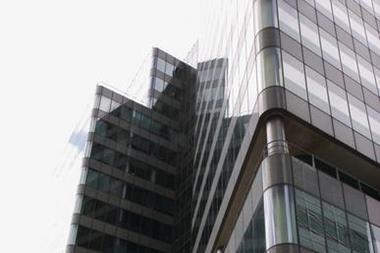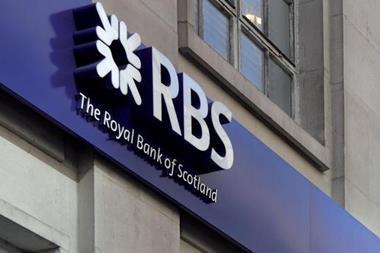Lloyd’s seems to be breathing easily, but the US insurance industry will be dreading the legal bill as its ‘blue blood’ investment bank, Goldman Sachs, squares up to the regulator over claims that an alleged conflict of interest amounted to fraud
The blogosphere and leftwing intellectuals are relishing the grand theatre that court cases against the Great Vampire Squid – as Rolling Stone magazine famously dubbed investment bank Goldman Sachs – should bring next year.
Gleeful comments have ranged from the amusing “slap on the tentacles” to the rather more bloodthirsty “the best solution to a vampire squid? Calamari”.
The US insurance industry, particularly the taxpayer-backed American International Group (AIG), though, is dreading the financial implications of what promise to be drawn-out, hideously expensive civil cases.
To the financial fraternity, Goldman is the great blueblood that every ambitious banker aspires to join; to many victims of the economic meltdown, its undoubted success is a symbol of all that is wrong with modern capitalism.
On 16 February, just four days before Goldman was to announce staggering results for the first quarter of its financial year – revenue was $12.8bn (£8.35bn), 36% up on the same period the previous year – executives were stunned by a high-profile lawsuit.
The US Securities and Exchange Commission (SEC) named Goldman and a young, rising vice-president, Fabrice Tourre, in a case alleging a $1bn fraud in and around 2007. Tourre – who calls himself ‘Fabulous Fab’ – had created a collateralised debt obligation (CDO), which is essentially a package of often unrelated loans, and in this case included subprime mortgages. These are the home loans given to low-income people, so many of who eventually defaulted that subprime, which helped cause the credit crunch.
The SEC alleges that Goldman failed to tell investors in the CDO about the role of hedge fund Paulson & Co in setting up the financial product. Paulson would make money if the CDO lost value, while the other investors, including the now Royal Bank of Scotland-owned Dutch bank ABN Amro, would profit if the product performed well.
Goldman, the SEC believes, had a conflict of interest that amounted to defrauding its investors. Since then, two Goldman investors, Robert Rosinek and Morton Spiegel, have filed lawsuits relating to this CDO and a similar product in what was known as the Abacus portfolio, accusing chief executive Lloyd Blankfein and other officials of failing in their fiduciary duty.
Getting in the big guns
Goldman will not back down, arguing as vociferously in private as it does in public that the bank, executives and Tourre did nothing wrong. A source close to the company says that Goldman would not agree to a settlement even if the SEC lowered the charges from fraud to negligence.
That Goldman intends to fight all the way and protect its reputation could prove very costly to its insurers. AIG is Goldman’s lead insurer against shareholder action suits, often known as derivatives. Blankfein and other executives use AIG to supply class A directors’ and officers’ (D&O) coverage, which should also cover the SEC charges. Both Goldman Sachs and AIG declined to comment for this article.
The D&O was placed by Chicago-based Aon. A US source said that “Goldman is very conservative”, indicating that there could be several other insurers that provide the D&O, with AIG sitting at the top of what would look figuratively like a tower structure.
AIG peer Chubb Corp’s chief operating officer and vice-president, John Degnan, warned last week: “If it were a derivative suit against Goldman, defence costs would be covered, and I’d prefer not to be a primary on the policy.”
A primary supplier on that policy could need to pay out “hundreds of millions of dollars”, says one London-based insurer. “Goldman will get the big guns in to protect them. I can’t see their lawyers being some tin-pot local firm.”
The investors are certainly talking big money, hinting that the potential damage to Goldman’s reputation – the bank’s share price plunged 13% on the day of the SEC announcement – and potential liabilities could run into the billions of dollars. They allege that management had failed to properly oversee the creation of the CDOs.
The investors say in their complaints: “As a result of the individual defendants’ unlawful course of conduct and breaches of fiduciary duties, Goldman Sachs has sustained substantial economic losses, and has had its reputation in the business community and financial markets irreparably tarnished.”
So far, this hasn’t filtered through to the London market. Lloyd’s suggests that, at most, there will only be some tiny hits as a result of syndication of insurance. “We don’t anticipate any significant exposure and we haven’t started reserving for it,” a spokesman says.
Indeed, some in the London market have been wary of providing D&O across the Atlantic for some time because of the litigious nature of the country. “We avoid the USA like the plague,” underwriting agency Dual International chairman Russell Kilpatrick says. “It’s great to go on holiday there, not so good for doing business. The potential liabilities are far too great.”
But Kilpatrick adds that the cost of the defence “might blow away” the limits of the cover. If this is the case, Goldman will have to purchase more cover that will inevitably be hugely expensive given the impending cases – should an insurer even be willing to provide a policy.
Pressure mounts
Despite covering Goldman’s court costs, AIG might bring an action of its own. AIG insured $6bn of the Abacus CDOs and lost $2bn. Democrat senators Elijah Cummings and Peter DeFazio are pushing for AIG to sue, calling on SEC chairman Mary Shapiro to examine whether or not Goldman CDOs backed by the insurer were potentially fraudulent.
“Should any of these transactions be found to include fraudulent conduct, any resulting contractual payments from AIG-issued credit-default swaps could be viewed as ill-gotten gains,” they argued in a letter to Shapiro.
But a source close to AIG told Insurance Times that it was “very premature” to assume that the company will follow the senators’ advice.
The senators’ interest is partly fuelled by AIG’s ownership. The company is still 80% owned by the US taxpayer as a result of its $182.3bn bailout by the government in September 2008.
Critics are angered that this means that the taxpayer will be covering both prosecution (of the SEC case at least) and defence costs, ignoring that AIG remains a commercial entity that is working its way back to private ownership.
The prosecution costs are unlikely to be much lower than Goldman’s. The SEC’s director of enforcement is Robert Khuzami, who made his name in corporate fraud cases with the US Attorney’s Office for the Southern District of New York. It is thought that Khuzami will prove just as resilient as Goldman.
Clearly, these cases won’t come cheap for anyone involved, least of all AIG and those below it in the D&O tower. IT
Hosted by comedian and actor Tom Allen, 34 Gold, 23 Silver and 22 Bronze awards were handed out across an amazing 34 categories recognising brilliance and innovation right across the breadth of UK general insurance.














































No comments yet